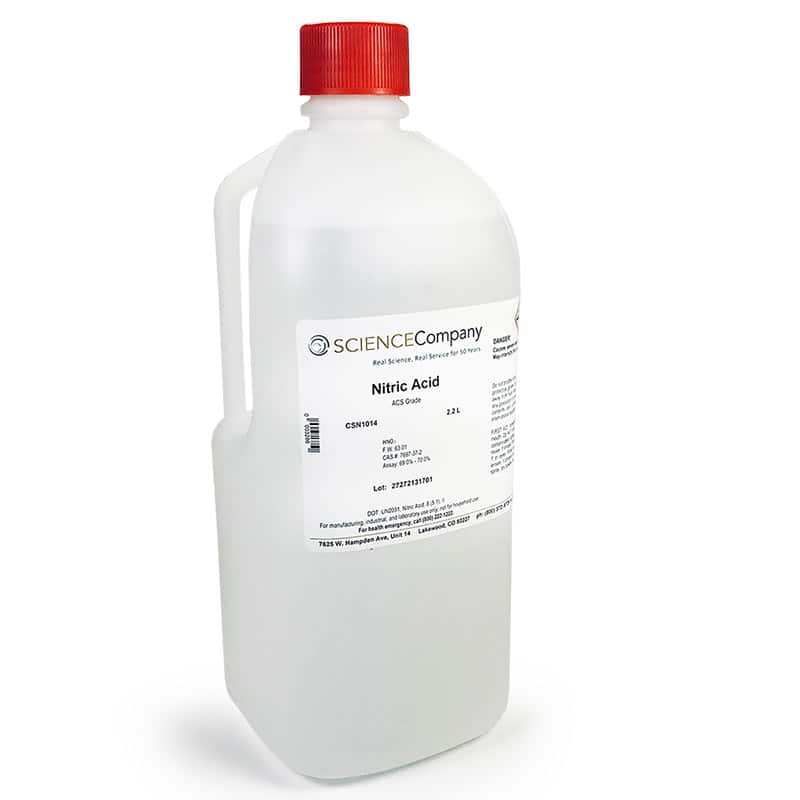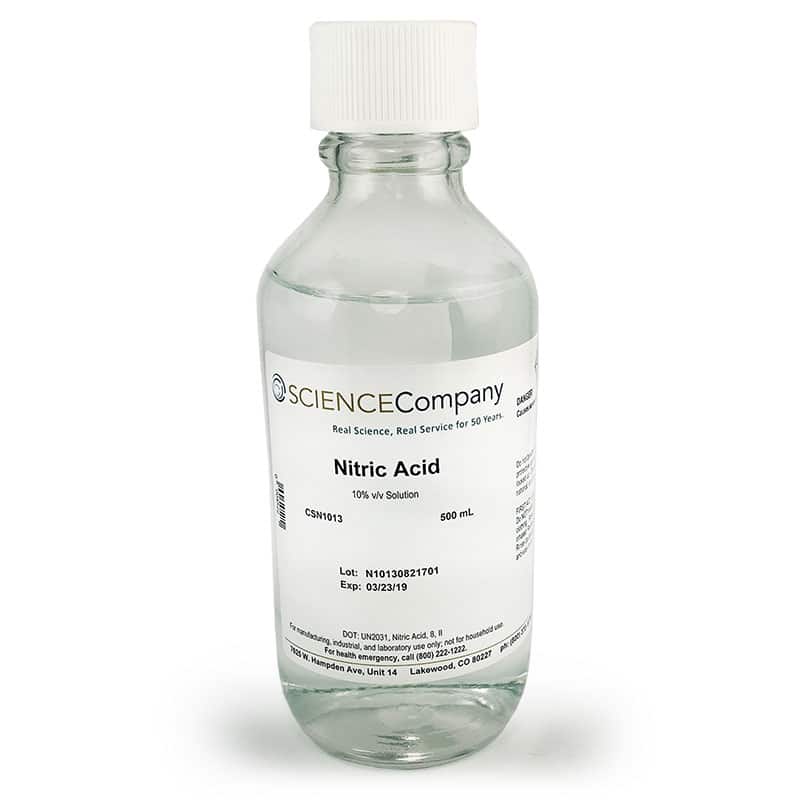


The efficiency of the absorption tower increases if pressure is increased the pressure is maintained at 10 atm. The oxides of nitrogen are passed into the absorption tower which is continuously fed with air so as to convert more of nitrogen monoxide to oxides of nitrogen and also continuous supply of water is maintained in such a way that the output of nitric acid from absorption tower has a concentration of 60%. The preparation and use of nitric acid were known to the early alchemists. The condensed nitric acid is directed in to the absorption tower to get mixed with the bulk of the acid being produced. nitric acid, (HNO3), colourless, fuming, and highly corrosive liquid (freezing point 42 ☌ 44 ☏, boiling point 83 ☌ 181 ☏) that is a common laboratory reagent and an important industrial chemical for the manufacture of fertilizers and explosives. The major bulk of nitric acid is obtained in the absorption tower. These are passed through a condenser in which some amount of nitric acid may be obtained. The gases from the outlet of the converter are first cooled by passing it through the cooler and after that the second chemical reaction step occurs in which nitrogen monoxide gets oxidized to oxides of nitrogen, primarily nitrogen dioxide and secondarily dinitrogen tetroxide. Enough oxygen remains in the output of the converter for the next chemical reaction steps to occur further down the line. The by products which are formed are water and nitrogen. This is done by maintaining the reaction temperature at 920☌ and pressure at 1-1.4 atm. The ammonia is catalytically oxidized in presence of oxygen to primarily yield nitrogen monoxide. Platinum or Platinum-Rhodium catalysts are used in the process if platinum-rhodium is used then rhodium amount is kept at 10%. This equipment contains gauzes of catalysts. The first chemical reaction steps occur in this equipment. The converter is the heart of the process. This mixed gas is passed to the converter. The air and ammonia are then mixed in a mixer type equipment. The air is compressed and passed through a heat exchanger in order to increase its temperature and then the preheated compressed air is passed through a filter to remove impurities if any. The liquid nitrogen is first vaporized and converted into the gaseous state and then it is passed through a filter in order to remove any impurities present in the raw material.


 0 kommentar(er)
0 kommentar(er)
